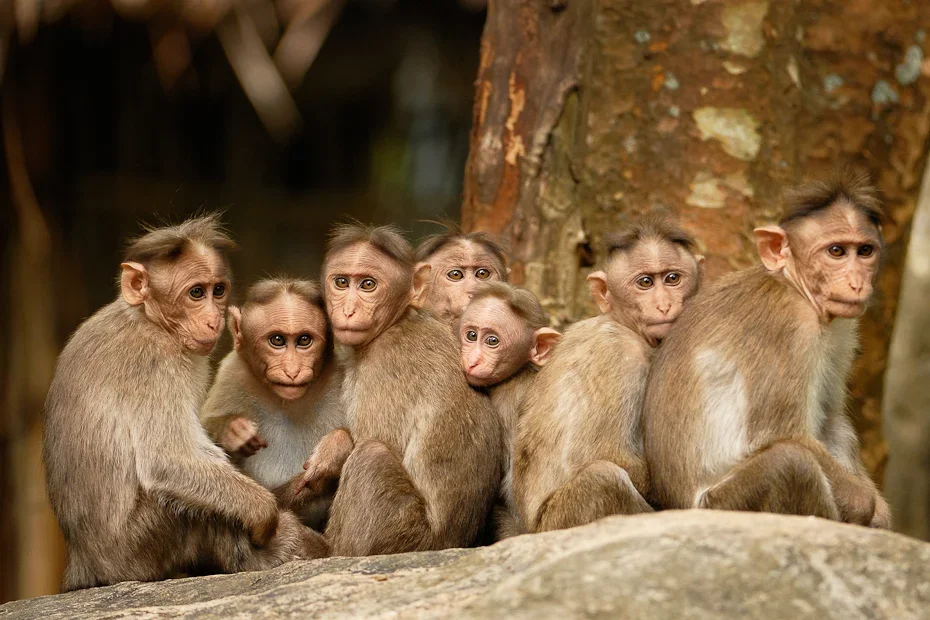Rapid Fire
Bonnet Macaque
- 30 Jun 2025
- 2 min read
Kerala is considering mass sterilisation of Bonnet Macaques (Macaca radiata), a widespread primate species, to manage their rising population and minimise human-wildlife conflicts.
Bonnet Macaques
- About: It is an Old-World monkey native to the Oriental region, especially southern India, and is known for the bonnet-like whorl of hair on its head.
- It inhabits evergreen and dry deciduous forests of the Western Ghats and also thrives in urban, suburban, and agricultural areas.
- Reproduction and Lifespan: They live in multi-male, multi-female groups. Females mature by 3 years, give birth at 4, with a gestation of around 24 weeks, and infants nurse for 6–7 months, staying close to their mothers for about a year.
- Behavior: They are arboreal (spend most of their time in trees) and terrestrial quadrupeds (walks on four limbs), active during the day and living in troops of around 30.
- Communication: They use visual (grinning, clicking), tactile, and vocal communication, including alarm calls to signal predators.
- They can also recognize alarm calls of sympatric primates like Hanuman langurs and lion-tailed macaques.
- Conservation Status:
- Wildlife Protection Act, 1972: Schedule I.
- IUCN: Vulnerable
- Feeding Habits: They are omnivorous, feeding on fruits, leaves, insects, bird eggs, and lizards. Near human settlements, they often raid food offerings, trash, and gardens.
| Read More: World Monkey Day |







